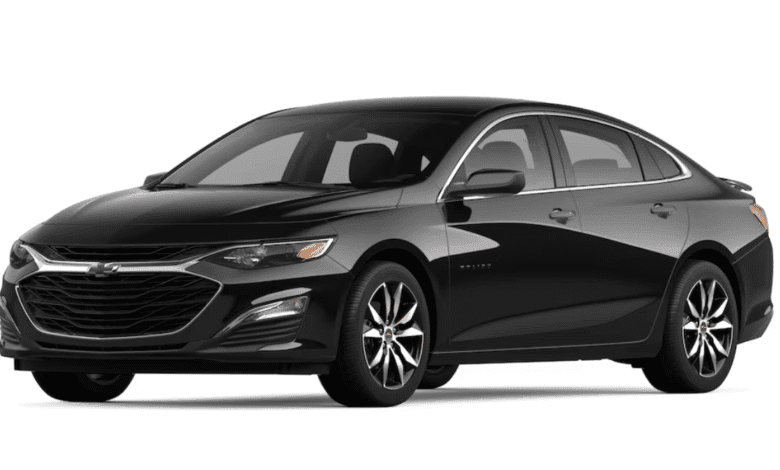
One conventional vehicle remains in the Bowtie range, the 2023 Chevrolet Malibu, 110 years after Arthur and Louis Chevrolet produced their first automobiles. Chevy still builds the Corvette and Camaro, but the Spark is no longer made, leaving just the Malibu as a sedan option. Due to the prevalence of SUVs, it’s also the only American midsize, well-known brand four-door you can purchase. The Malibu is attractive and straightforward to live with, albeit not very thrilling or quick. In these days of excessive automobile pricing, it may also be a good deal.
Rumours about Malibu’s extinction circulated after a protracted manufacturing halt in 2021, but it eventually resumed in 2022 and is still being produced this year. Due to the spike in SUV sales at Chevrolet, it will likely ultimately be discontinued, much like the Buick Regal and Ford Fusion before it, even though it initially debuted in mid-2015. The old Malibu Premier model and its 250-horsepower turbocharged engine have been discontinued, and several formerly optional safety features have been made standard.
Chevrolet pioneered external design when the Malibu was new, even if it is now an older vehicle. Despite other manufacturers adopting the fastback design, namely the Hyundai Sonata and Kia K5, it has aged quite well. The inner space is not compromised by the form either. However, the Malibu is competing with generally more modern styles. The 2023 Honda Accord is stronger than ever, as are the Toyota Camry, Subaru Legacy, and Nissan Altima. It’s still competitive in several ways.
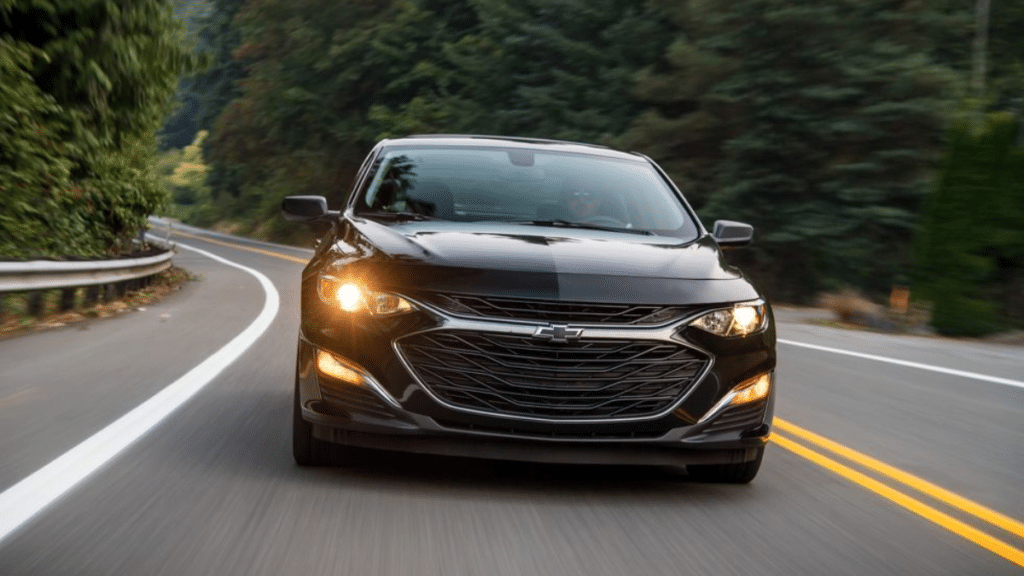
Every Malibu now has a 160-horsepower 1.5-litre turbocharged four-cylinder engine paired to a continuously variable automatic gearbox (CVT), replacing the Premier and its potent powerplant. The Malibu only has front-wheel drive, much like the Accord and Sonata, but Chevy’s engine is noticeably less potent than those of Honda and Hyundai. While not sluggish, it lacks excitement. Similar to the handling, the ride is comfortable. Performance is no better nor worse than in the base-model Legacy or Altima, and gas mileage is respectable but not exceptional.
The Malibu’s interior is somewhat simple and, in lesser trims, is a sea of black plastic, but it is suitable for four passengers, with space in the rear seat for tall persons. The 15.7 cubic-foot trunk is practical, and the door apertures are spacious enough for bulky car seats. Although Chevrolet’s safety ratings from IIHS and NHTSA remain average, this year, Chevrolet has finally made several active safety technologies, such as automatic emergency braking, standard. Although it still falls well short of what you get on the basic Altima or Legacy, this is a step in the right direction.
The Malibu is still attractive, even if Chevy doesn’t provide the extensive warranty coverage of the Korean manufacturers and is less generous with free maintenance than either Hyundai or Toyota. It’s hassle-free, peaceful, and spacious, and unlike other recently released models like the Accord, it often comes at the claimed price. On MSRP, the Malibu only has a little pricing edge over its competitors, but real-world discounts could be easier to find, especially on lower-trim models. This is your only option if you’re determined to be a midsize domestic brand.
Performance: Chevrolet Malibu
With the Premier trim gone, all Malibus are now powered by a turbocharged 1.5-litre four-cylinder engine, making 160 horsepower and 184 pound-feet torque mated to a CVT. While it doesn’t feel slow, the Malibu is never in very much of a hurry and can seem a little winded trying to pass on steep grades. Acceleration is average and will hit 60 mph in around 8 seconds.
The car’s handling is neutral, without too much understeer, and the steering is light without being floaty. It rides quietly and smoothly, even over broken pavement, and the sporty-looking RS trim doesn’t change how it drives. This is a transportation appliance, nothing more. The Sonata and K5 are more engaging, but the Malibu goes about the same as an Altima and a little more smoothly than the lower-trim Legacy. There’s no all-wheel drive option and no more powerful engine to upgrade.
The Malibu’s fuel-saving stop-start system is a bit herky-jerky but can be easily turned off.
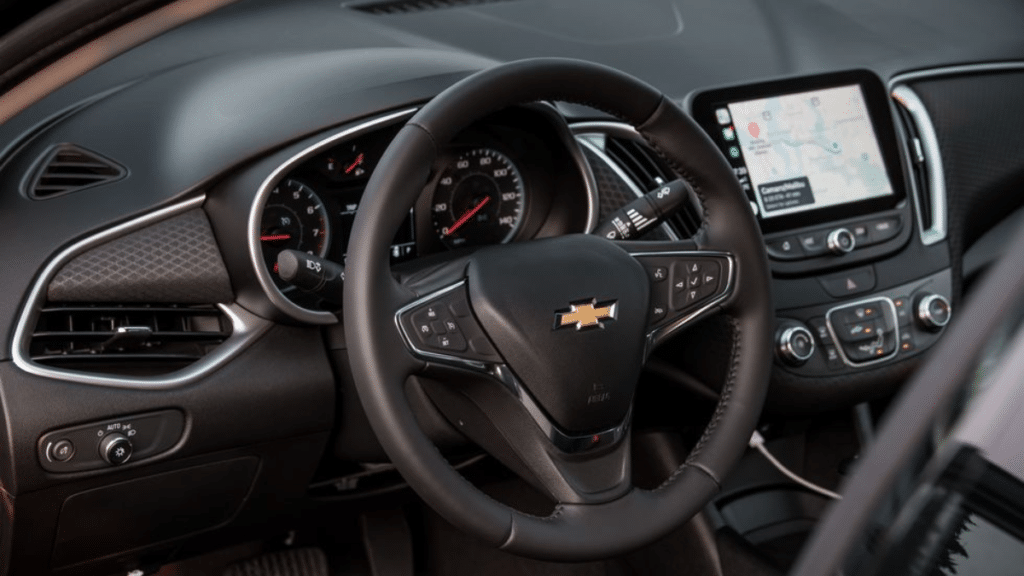

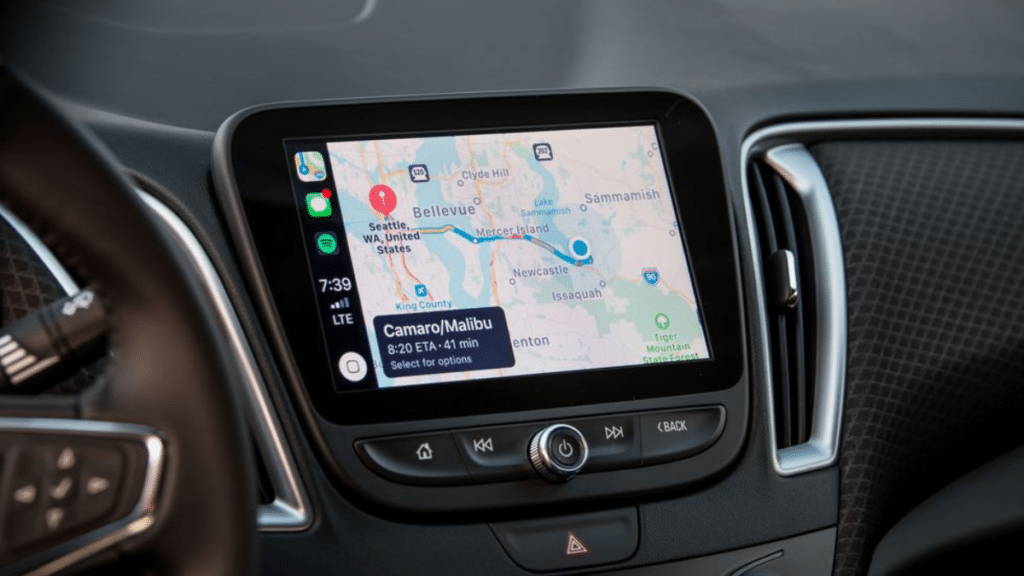
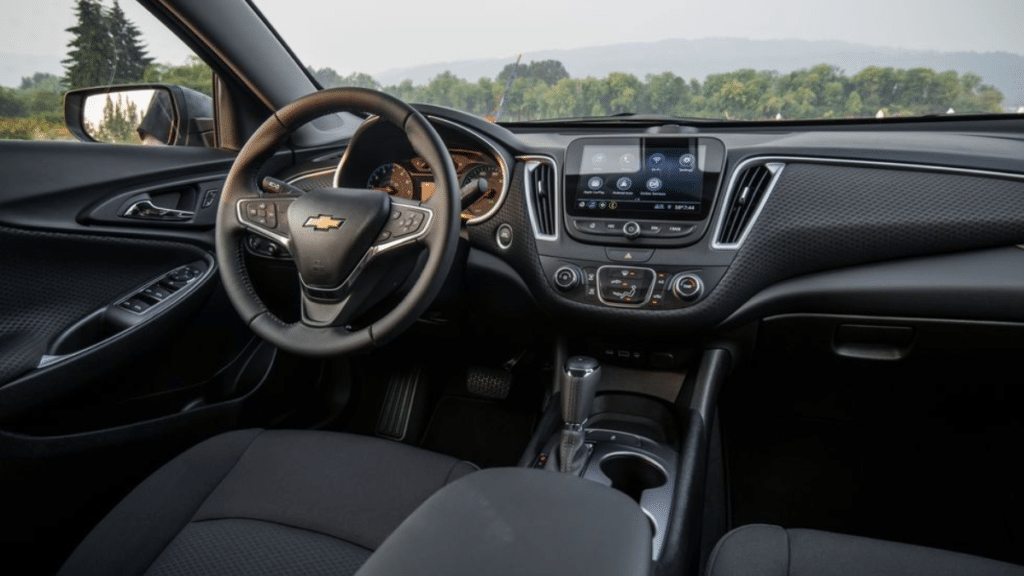
Fuel Economy: Chevrolet Malibu
Since there’s no hybrid option, the Malibu can’t match the Accord, Camry, or Hyundai Sonata hybrids on fuel economy. However, compared to the non-hybrid entry-level versions of those cars, it does okay. The EPA rates the Malibu at 30 mpg combined (27 city, 35 highway), but in Forbes Wheels’ testing of several Malibus, we beat that estimate and saw a combined average of 32.4 mpg and up to 37 mpg on the highway. That’s a little better than the lower-end Legacy or K5 models.
Safety & Driver Assistance :
The 2023 Chevrolet Malibu gets a four-star overall rating from the National Highway Traffic Safety Administration (NHTSA) and a slate of “Good” marks in all of the Insurance Institute for Highway Safety’s (IIHS) tests. Those results are mediocre in this highly competitive field, and several of Malibu’s competitors earn “Top Safety Pick” designations from IIHS and five stars from NHTSA.
At the very least, Chevrolet has finally added some standard active safety features. Forward automatic emergency braking with pedestrian detection, lane departure warnings with lane keep assist, forward collision alerts, a following distance indicator, and automated high beams are now included on all Malibu trims. However, this still isn’t as much gear as you get from the competition, with features like adaptive cruise control standards at Honda and Subaru.
A $545 Driver Confidence Package adds rear cross-traffic alerts, lane change alerts with blind spot detection, and rear parking assist. Still, it also wipes out Malibu’s price advantage over its competitors. Now that the Premier trim is gone, so is adaptive cruise control.
Comfort & Room: Chevrolet Malibu
Exciting it isn’t, but as frequent visitors to the rental car facility at the airport can attest, the Malibu is quiet and comfortable. Like most other family sedans, there’s plenty of room for tall folks in front. There’s a little less legroom than most rivals, but the open, airy cabin doesn’t feel confining. The seats are supportive and well-bolstered, if a little firm (though the ones in the Subaru Legacy are firmer).
The real test for family friendliness is the back seat, and here, the Malibu also does well. With 38.1 inches of rear legroom, it’s 2 inches shy of the capacious Accord and a little less behind the Legacy. Still, it has more legroom than the Altima (35.2 inches) or the Sonata (34.8). Even a 6-foot-4 adult could easily ride back there all day without feeling confined. Numbers aside, the Malibu feels more significant than it is and perfectly comfortable.
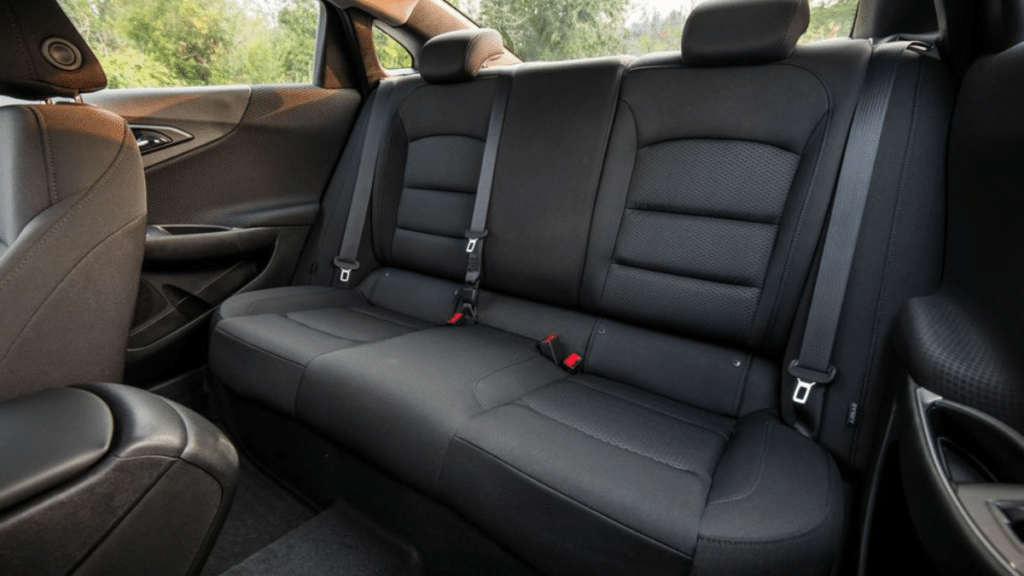
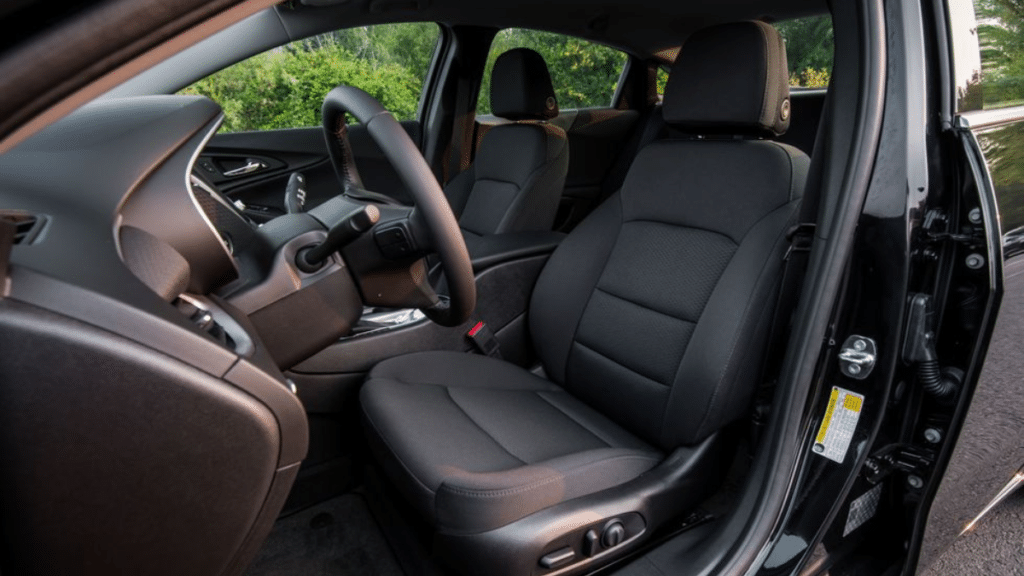


Infotainment: Chevrolet Malibu
Every Malibu has an 8-inch touchscreen infotainment system that runs GM’s recognizable and eye-catching software. In contrast to more modern and flashy systems like Kia’s superb Connect, this interface’s simplicity is a plus. The menus and systems in Chevy are simple to use and understand. There are also many additional physical controls, even though some manufacturers insist on placing touchscreens for things like HVAC and other features, like buttons.
Wireless Apple CarPlay and Android Auto are standard and functional for individuals who don’t like the usual interface. A and C-type regular USB ports and a Wi-Fi hotspot that needs a data subscription are also included. Unfortunately, the expensive top-trim 2LT is the only one with navigation; however, you can always use CarPlay or Android Auto instead.
Storage & Cargo Space:
The Malibu features one of the most enormous trunks in its class, with 15.7 cubic feet of storage space, just behind the Accord’s best-in-class 16.7 cubic-foot hold and the 16 cubic feet in the Kia K5 and Hyundai Sonata. The Subaru Legacy stands out in this comparison despite being smaller overall because of its large load opening and well-designed inside space. The cabin’s interior is additionally loaded with compartments and bins for storage. While the Accord does somewhat better in this area, most drivers will find it simple to use all the room the Chevy puts in.
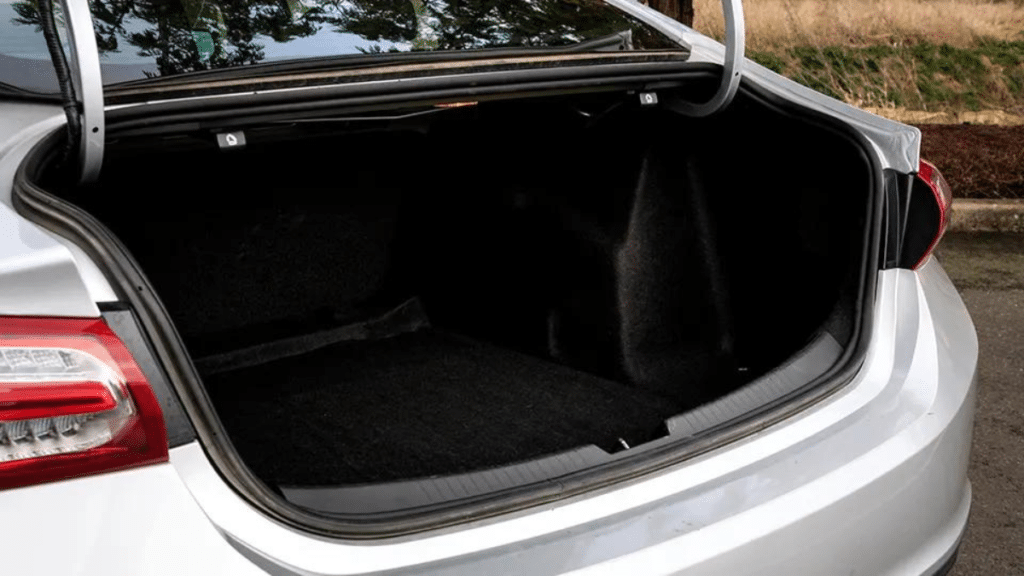
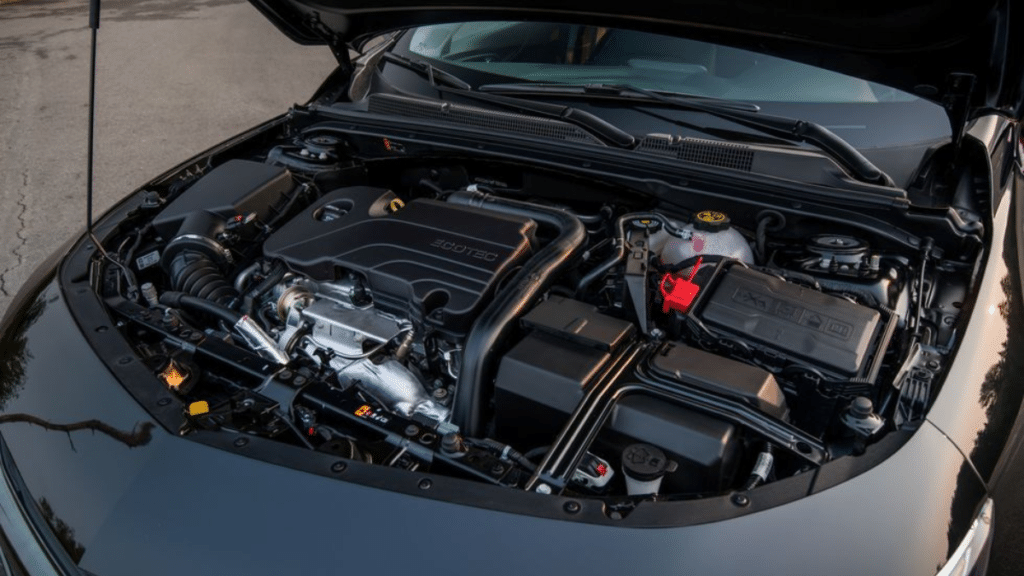
Design: Chevrolet Malibu
The Chevrolet Malibu’s form, which is already quite recognizable, was first revealed in 2015 as a 2016 model. However, the manufacturer anticipated external design fads, and its streamlined fastback style has held up remarkably well over time. The Sonata and K5, the Volkswagen Arteon, the smaller Hyundai Elantra, and the Tesla Model 3 are just a few vehicles that have adopted the fastback style in recent years. The Malibu’s exterior was last revised by Chevrolet in 2019 and hasn’t altered since then, yet it still functions.
Despite its essential and elegant design, the Malibu’s cabin appears antiquated since the inside has always been less daring than the outside. Although the quality of the materials is higher than in earlier GM vehicles, especially those from the early 2000s, there is still some cheap plastic to be found. Although the 2LT trim may be ordered with a lovely two-tone brown scheme, the interior is primarily grey or black.
Is the 2023 Chevrolet Malibu Worth it?
The Malibu is a respectable everyday vehicle that meets the demands of a wide range of customers, yet it isn’t particularly thrilling. However, it doesn’t provide much of a price advantage over its rivals, which makes it less attractive when new vehicle stocks start to increase. Compared to other family sedans, you have a better chance of finding it at the listed price and in stock, but the value will ultimately rely on the offer you are presented with. It’s a simple automobile to live with if you can locate one cheaply.
There are four grades, with the base LS beginning at $26,095 (plus $1,095 for destination), which is around $600 more expensive than the better-equipped (and roomier) base-model Subaru Legacy.
The $27,095 RS is the best group if you don’t mind going without heated seats or 17-inch wheels since, even after adding the $545 Driver Confidence package, it is still under $28,000. The $29,195 LT is a better option if you want a few more options, like a remote start, the choice of heated seats, and the steering wheel (helpful features in harsh midwestern winters). The Driver Confidence option still costs more but has heated front seats, better wheels, and other niceties.
This year’s Premier is replaced by the $32,595 2LT trim, which includes navigation and the finest inside colour scheme, but the Malibu’s rivals offer better values at that price.
How Much Does the Chevrolet Malibu Cost to Insure?
The cost of insurance for the Chevrolet Malibu is comparable to its rivals. Although this figure covers all 50 states, a typical 30-year-old female driver with a clean record should anticipate an average yearly premium of $1,992. In contrast, the Honda Accord costs $1,973, the Hyundai Sonata costs $2,138, and the Nissan Altima costs $2,101.
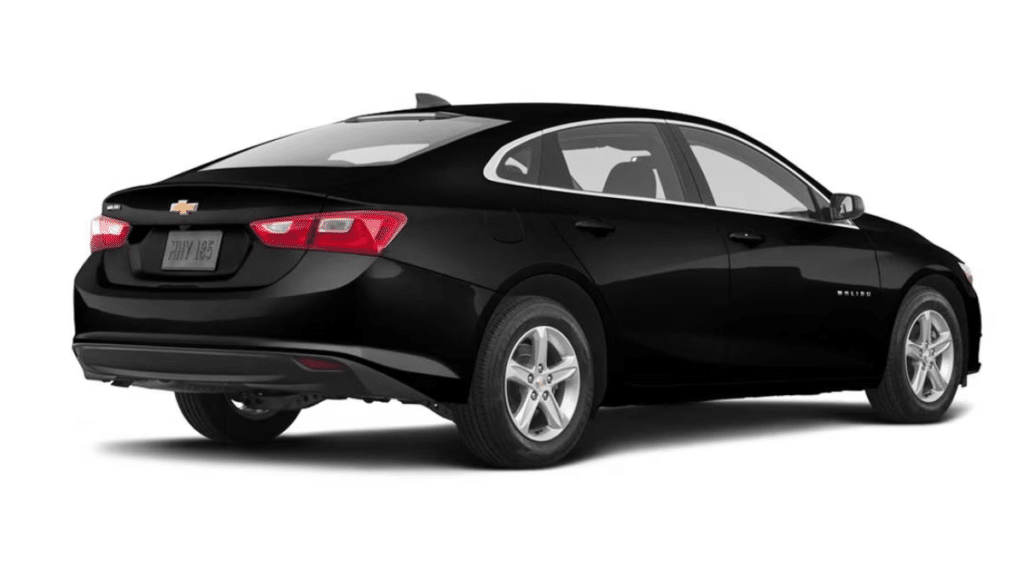
Generations of the Chevrolet Malibu
Ninth Generation
2016 to Present
The ninth-generation Malibu was premised as a 2016 model at the New York Car Show 2015. Chevrolet’s Teen Driver safety feature, which captures information such as maximum speed, distance travelled, stability control activation, and forward-collision alarms so parents can view it later through the infotainment screen, debuted in the redesigned 2016 Malibu. Initially offered with a 1.5-litre turbocharged four-cylinder engine with 160 horsepower, a 1.8-litre hybrid with 124 horsepower, or a 2.0-litre turbo four with 250 horsepower, the combination and more potent turbo were deleted for 2020 and 2023, respectively.
Eighth Generation
2013 to 2016
As a 2013 model, the eighth-generation Malibu began on sale in 2012. The eighth-generation Malibu is a truly global car offered in countries all over the world with only minimal engine, technology, and styling alterations designed to comply with local legislation or regional style preferences. 2016 saw the eighth-generation Malibu being marketed alongside the new ninth-generation Malibu under Malibu Limited.
Seventh Generation
2008 to 2012
The seventh-generation Malibu, which underwent extensive redesigning in 2008, was almost universally praised by the automotive press. All grades were attractive and well-equipped, with six airbags, traction control, OnStar, and anti-lock brakes as standard features. 2010 saw the end of the seventh-generation Malibu’s hybrid model.
Sixth Generation
2004 to 2008
The sixth-generation Malibu, available as a four-door sedan or a five-door hatchback called the Malibu Maxx, continued to perfect the small-sedan concept with varying degrees of success. A Malibu Maxx SS variant with 240 horsepower just showed up.
Fifth Generation
1997 to 2005
The front-wheel-drive fifth-generation Malibu sedan was made from an entirely new material and debuted more than ten years after the Malibu moniker was last seen in a Chevrolet dealership. The contemporary, front-wheel drive sedan, designed to compete with the Toyota Camry and Honda Accord, upset many brand fans who thought the name Malibu deserved more than being attached to a front-wheel drive budget vehicle. Over its lifespan, the fifth-generation Malibu only got modest technical and aesthetic improvements. Even after the sixth-generation Malibu superseded the consumer model, the fifth-generation Malibu was still produced for rental and fleet purchasers.
Fourth Generation
1978 to 1983
In 1978, Chevrolet completely dropped the Chevelle label, putting the whole emphasis of the brand’s midsized offering on the Malibu name. The fourth-generation Malibu was offered as a coupe, sedan, and station wagon but was smaller and lacked the curves of earlier incarnations.
Third Generation
1973 to 1977
A significant makeover introduced in 1973 fell short of inspiring the same enthusiasm as the prior generation. In 1974, Chevrolet devalued the Malibu moniker and reassigned it to designate the base Chevelle vehicle.
Second Generation
1968 to 1972
For 1968, both the Malibu and its Chevelle stablemate had utterly new sheet metal. Chevrolet regularly updated the Malibu with minor aesthetic tweaks to the front and rear fascias over the four years that the new semi-fastback design was in place. The second-generation Malibu has become an icon, perhaps the most well-known model of the original Malibu.
First Generation
1964 to 1967
The Malibu was introduced as the cheaper version of the Chevelle, offering improved style and material quality. Malibu rose to prominence as a brand name attached to coupes, sedans, convertibles, and wagons.
Verdict
The last midsize, mainstream American automobile on the market is the 2023 Chevrolet Malibu. Despite being one of the oldest vehicles in its class, it is nonetheless a reliable albeit unexceptional vehicle. This year, Chevrolet only offers the 160-horsepower basic engine instead of the previous 250-horsepower top-trim Premier, but it has added some vital standard safety equipment. The Malibu’s slow performance is offset by its roomy, comfortable cabin, large trunk, and fastback style, which gives it a still-relatively modern appearance. However, most of its recent rivals are more feature-rich and accessible to drive.




